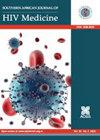南非多重性伙伴关系和避孕套使用的认知和行为决定因素:一项全国性调查的结果
IF 1.6
4区 医学
Q4 INFECTIOUS DISEASES
引用次数: 8
摘要
背景:人类免疫缺陷病毒(艾滋病毒)危险行为,包括多个性伙伴关系(MSP)和不使用避孕套(nCU),已知是艾滋病毒传播的驱动因素;包括艾滋病毒易感性、自我效能感和态度在内的认知因素在影响危险性行为方面发挥着重要作用。我们试图调查与南非MSP和nCU相关的个人信仰、观念、思想和行为。方法我们分析了2012年全国艾滋病毒传播调查(NCS)的全国代表性数据,其中包括约10,000名年龄在16-55岁之间的参与者。创建了五个构念来测量社会心理和认知决定因素。计算内部一致性信度的Cronbach α系数。采用多变量logistic回归确定与MSP和nCU相关的因素。结果6061名性活跃的调查对象中,13% (95% CI: 11.47 ~ 13.12)报告了MSP, 52.7% (n = 3158 / 6039) (95% CI: 51.0 ~ 53.55)报告了末次性行为中的nCU。与MSP相关的因素包括感知获益,调整优势比(aOR) = 2.16 (95% CI: 1.80-2.58),感知HIV易感性,aOR = 2.22 (95% CI: 1.83-2.69),以及参与代际性行为,aOR = 2.14 (95% CI: 1.78-2.56)。nCU的预测因子为感知获益,aOR = 1.25 (95% CI: 1.09-1.43);感知HIV易感性,aOR = 1.6 (95% CI: 1.39-1.83);和个人信仰,aOR = 1.35 (95% CI: 1.13-1.62)。结论认知和行为因素是HIV高危性行为的预测因素。这突出了在试图理解和影响个人性行为时考虑个人感知和推理的重要性。这可以通过提高一般人群对艾滋病毒风险的认识,以及通过社区动员、宣传和开展提高自尊的活动来影响认知行为的改变来实现。本文章由计算机程序翻译,如有差异,请以英文原文为准。
Cognitive and behavioural determinants of multiple sexual partnerships and condom use in South Africa: Results of a national survey
Background Human immunodeficiency virus (HIV) risky behaviours including multiple sexual partnership (MSP) and non-condom use (nCU) are known to be drivers of the spread of HIV; cognitive factors including perceived susceptibility of HIV, self-efficacy and attitudes play a significant role in influencing risky sexual behaviours. Objectives We sought to investigate personal beliefs, perceptions, thoughts and actions that are associated with MSP and nCU in South Africa. Methods We analysed nationally representative data from the 2012 National HIV Communication Survey (NCS) that included about 10 000 participants aged 16–55 years. Five constructs were created to measure psychosocial and cognitive determinants. Cronbach’s alpha coefficient for internal consistency reliability was calculated. Multivariable logistic regression was used to determine factors associated with MSP and nCU. Results Of the 6061 sexually active respondents, 13% (95% CI: 11.47–13.12) reported MSP and 52.7% (n = 3158 of 6039) (95% CI: 51.0–53.55) nCU at last sex. Factors associated with MSP included perceived benefits, adjusted odds ratio (aOR) = 2.16 (95% CI: 1.80–2.58), perceived susceptibility to HIV, aOR = 2.22 (95% CI: 1.83–2.69) and engaging in intergenerational sex, aOR = 2.14 (95% CI: 1.78–2.56). Predictors of nCU were perceived benefits, aOR = 1.25 (95% CI: 1.09–1.43); perceived susceptibility to HIV, aOR = 1.6 (95% CI: 1.39–1.83); and personal beliefs, aOR = 1.35 (95% CI: 1.13–1.62). Conclusion Cognitive and behavioural factors were found to be predictors of risky sexual behaviours for HIV. This highlights the importance of considering personal perception and reasoning when attempting to understand and influence an individual’s sexual behaviour. This could be done through enhancing awareness of HIV risk in the general population and by influencing cognitive behaviour change through community mobilisation, advocacy and creating activities to improve self-esteem.
求助全文
通过发布文献求助,成功后即可免费获取论文全文。
去求助
来源期刊
CiteScore
2.80
自引率
11.80%
发文量
41
审稿时长
>12 weeks
期刊介绍:
The Southern African Journal of HIV Medicine is focused on HIV/AIDS treatment, prevention and related topics relevant to clinical and public health practice. The purpose of the journal is to disseminate original research results and to support high-level learning related to HIV Medicine. It publishes original research articles, editorials, case reports/case series, reviews of state-of-the-art clinical practice, and correspondence.

 求助内容:
求助内容: 应助结果提醒方式:
应助结果提醒方式:


